Halloween is an annual celebration on October 31st, preceding All Hallows' Day and marking the start of Allhallowtide, a period for remembering the dead, including saints and martyrs. While rooted in religious observance, it has evolved into a popular cultural event. It is widely associated with themes of horror, the macabre, and the supernatural, moving away from its purely religious origins to embrace secular traditions.
1911: Guising in North America
In 1911, a newspaper in Kingston, Ontario, Canada, reported children going "guising" around the neighborhood, marking an early instance of this custom in North America.
1911: First Reference to Guising in North America
In 1911, the first reference to "guising" in North America appeared.
1914: Púicíní Featured in "Clay"
In 1914, the Irish game púicíní ("blindfolds") features prominently in the James Joyce short story "Clay".
1915: Reference to Ritual Begging
In 1915, another reference to ritual begging on Halloween appeared, place unknown.
1915: Opening of the Orton and Spooner Ghost House
In 1915, the first recorded purpose-built haunted attraction, the Orton and Spooner Ghost House, opened in Liphook, England.
1919: Publication of The Book of Hallowe'en
In 1919, Ruth Edna Kelley wrote The Book of Hallowe'en, the first book-length history of Halloween in the US, discussing the adoption and adaptation of customs from other countries.
1920: Reference to Ritual Begging in Chicago
In 1920, a reference to ritual begging appeared in Chicago.
1927: First Use of "Trick or Treat"
In 1927, the earliest known use in print of the term "trick or treat" appeared in the Blackie Herald, of Alberta, Canada.
1931: Release of Frankenstein
In 1931, the classic horror film Frankenstein was released, contributing to the modern imagery associated with Halloween.
1932: Release of The Mummy
In 1932, the classic horror film The Mummy was released, contributing to the modern imagery associated with Halloween.
1934: First US Appearances of "Trick-or-treating"
In 1934, the first US appearances of the term "trick-or-treating" were recorded.
1939: First Use of "Trick-or-treating" in National Publication
In 1939, the first use of the term "trick-or-treating" in a national publication occurred.
1950: Start of "Trick-or-Treat for UNICEF"
In 1950, the "Trick-or-Treat for UNICEF" fundraising program began as a local event in a Northeast Philadelphia neighborhood.
1952: "Trick-or-Treat for UNICEF" Expands Nationally
In 1952, "Trick-or-Treat for UNICEF" expanded nationally, involving the distribution of collection boxes to trick-or-treaters.
1957: Opening of San Mateo Haunted House
In 1957, sponsored by the Children's Health Home Junior Auxiliary, the San Mateo Haunted House opened.
1958: Opening of San Bernardino Assistance League Haunted House
In 1958, the San Bernardino Assistance League Haunted House opened.
1962: Home Haunts Begin Appearing Across the Country
In 1962, home haunts began appearing across the country.
1963: Home Haunts Continued Appearing Across the Country
In 1963, home haunts continued appearing across the country.
1964: Openings of San Mateo Haunted House and Children's Museum Haunted House
In 1964, the San Mateo Haunted House and the Children's Museum Haunted House in Indianapolis opened.
August 1969: Opening of The Haunted Mansion
On August 12, 1969, The Haunted Mansion opened in Disneyland, contributing to the haunted house as an American cultural icon.
1970: First Halloween Haunted House Run by a Nonprofit
In 1970, the first Halloween haunted house run by a nonprofit organization was produced by the Sycamore-Deer Park Jaycees in Clifton, Ohio.
1972: First "hell houses" Opened
In 1972, Evangelical Christians opened one of the first "hell houses".
1973: Opening of Knott's Scary Farm
In 1973, Knott's Berry Farm began hosting its own Halloween night attraction, Knott's Scary Farm.
1974: New York's Village Halloween Parade Began
In 1974, the yearly New York's Village Halloween Parade was begun, becoming the world's largest Halloween parade and America's only major nighttime parade.
1976: March of Dimes Copyrighted "Mini haunted house for the March of Dimes"
In 1976, The March of Dimes copyrighted a "Mini haunted house for the March of Dimes" and began fundraising through their local chapters by conducting haunted houses soon after.
1982: Last Production of Sycamore-Deer Park Jaycees Haunted House
In 1982, the Sycamore-Deer Park Jaycees Haunted House in Clifton, Ohio, had its last production.
May 1984: Haunted Castle Fire at Six Flags Great Adventure
In May 1984, the Haunted Castle at Six Flags Great Adventure caught fire, resulting in the deaths of eight teenagers and leading to tightened safety regulations.
1986: Six Flags Fright Fest Began
In 1986, Six Flags Fright Fest began.
1991: Universal Studios Florida Began Halloween Horror Nights
In 1991, Universal Studios Florida began Halloween Horror Nights.
2006: UNICEF Discontinues Halloween Collection Boxes in Canada
In 2006, UNICEF decided to discontinue their Halloween collection boxes in Canada due to safety and administrative concerns, redesigning the program after consulting with schools.
2010: Pet Halloween Costume Spending
In 2010, an estimated $200 million was spent on Halloween costumes for pets.
2018: Pet Halloween Costume Spending
According to a 2018 report, 30 million Americans will spend an estimated $480 million on Halloween costumes for their pets.
2019: Spending on Home Decorations for Halloween
In 2019, $2.7 billion was spent on home decorations for Halloween.
2022: Halloween Spending in the US
In 2022, Americans spent $10.6 billion on Halloween.
2023: Projected Halloween Spending in the US
In 2023, Americans were projected to spend $12.2 billion on Halloween.
Mentioned in this timeline
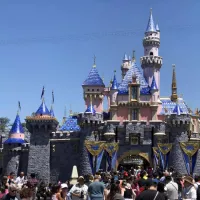
Disneyland located in Anaheim California is the first theme park...
Florida a state in the Southeastern United States is largely...
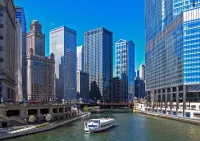
Chicago is the most populous city in Illinois and the...
Canada is a North American country the second largest in...
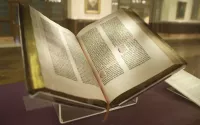
Books are a means of storing information as text or...
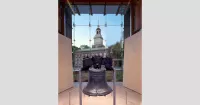
Philadelphia or Philly is Pennsylvania's most populous city and the...
Trending
5 months ago Chris Hemsworth Teases 'Avengers: Doomsday', Hints at Scottish Highlands MCU Location.
1 month ago Rocket Lab's Q3 2025 Results: Record Revenue Growth Fuels Stock Surge.

Jeremiah O'Connell is a renowned American actor celebrated for his diverse roles in film and television His career spans from...
25 days ago Republic Services Donates Turkeys Across Tennessee for Holidays, Helping Families in Need
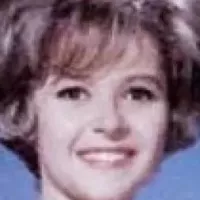
Brenda Lee known as Little Miss Dynamite is an American singer prominent in rockabilly pop country and Christmas music Achieving...
2 months ago Good Morning America Celebrates 50 Years: Anchors Reflect on Success and Show's Impact.
Popular
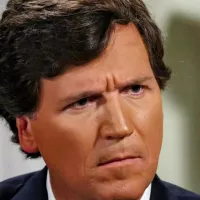
Tucker Carlson is an American conservative political commentator known for...

Candace Owens is an American conservative political commentator and author...

XXXTentacion born Jahseh Dwayne Ricardo Onfroy was a controversial yet...

Ben Shapiro is a prominent American conservative political commentator media...

William Franklin Graham III commonly known as Franklin Graham is...

Bill Gates an American businessman and philanthropist revolutionized personal computing...
